
Challenge:
Expand Harley-Davidson’s consumer base among younger audiences to stay relevant in an increasingly competitive market.
Strategy:
Transforming Harley-Davidson from being associated with older white males and veterans to a brand focused on helping people harness their power and find community through rebellion.
Outcome:
Promotion of the Sportster line to effectively compete against Japanese competitors, expansion of the Rider’s Edge program to lower the barrier of entry to new riders, and increasing brand awareness among younger people looking to embrace the rebellious principles Harley-Davidson was founded on.
Harley-Davidson
Masters in Branding, School of Visual Arts, 2023
Course: Brand Management
Instructor: Christina Rogoll Christophersen
SCROLL DOWN FOR SLIDE DECK
SCROLL DOWN FOR SLIDE DECK
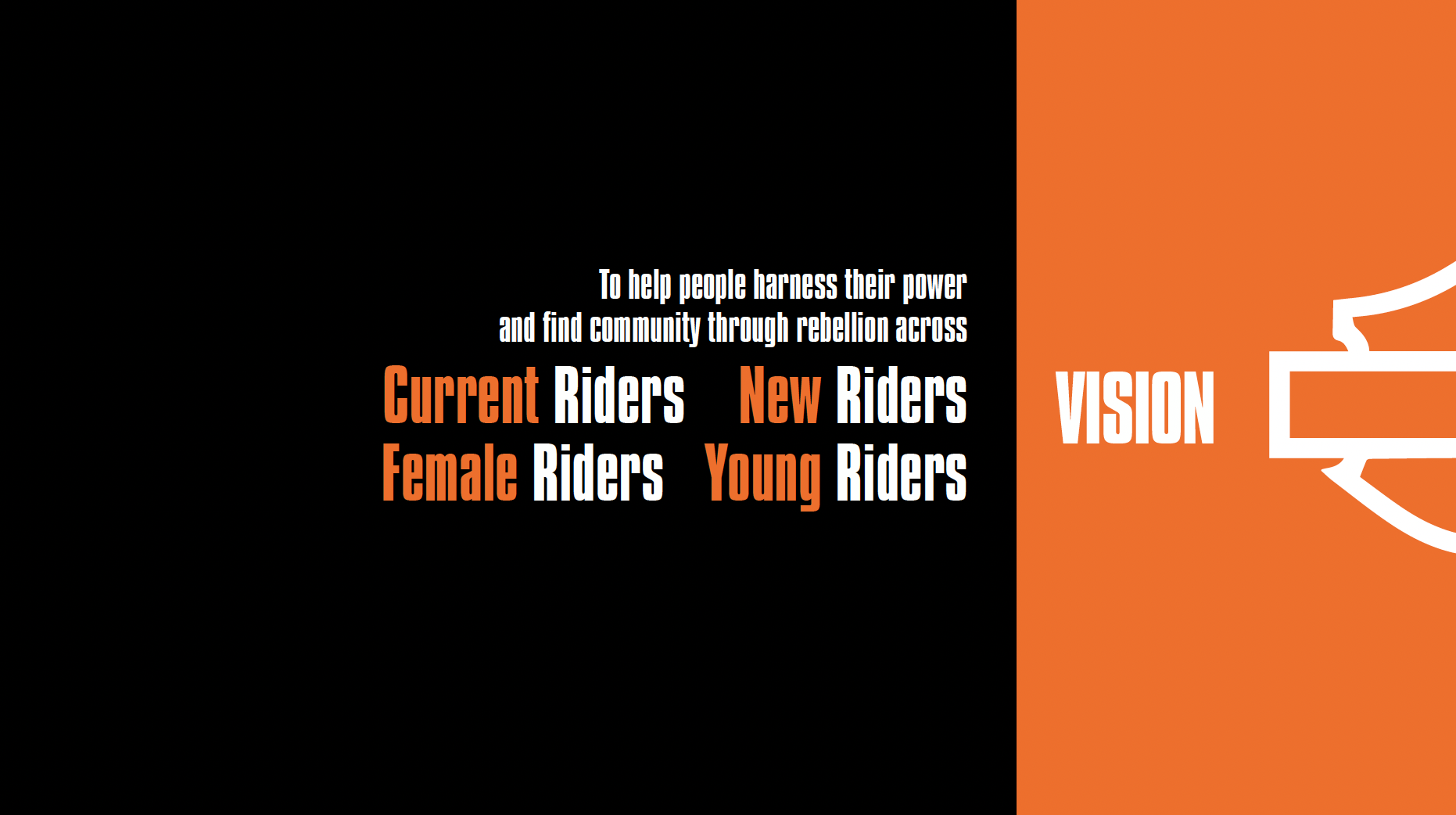
Target audiences for messaging
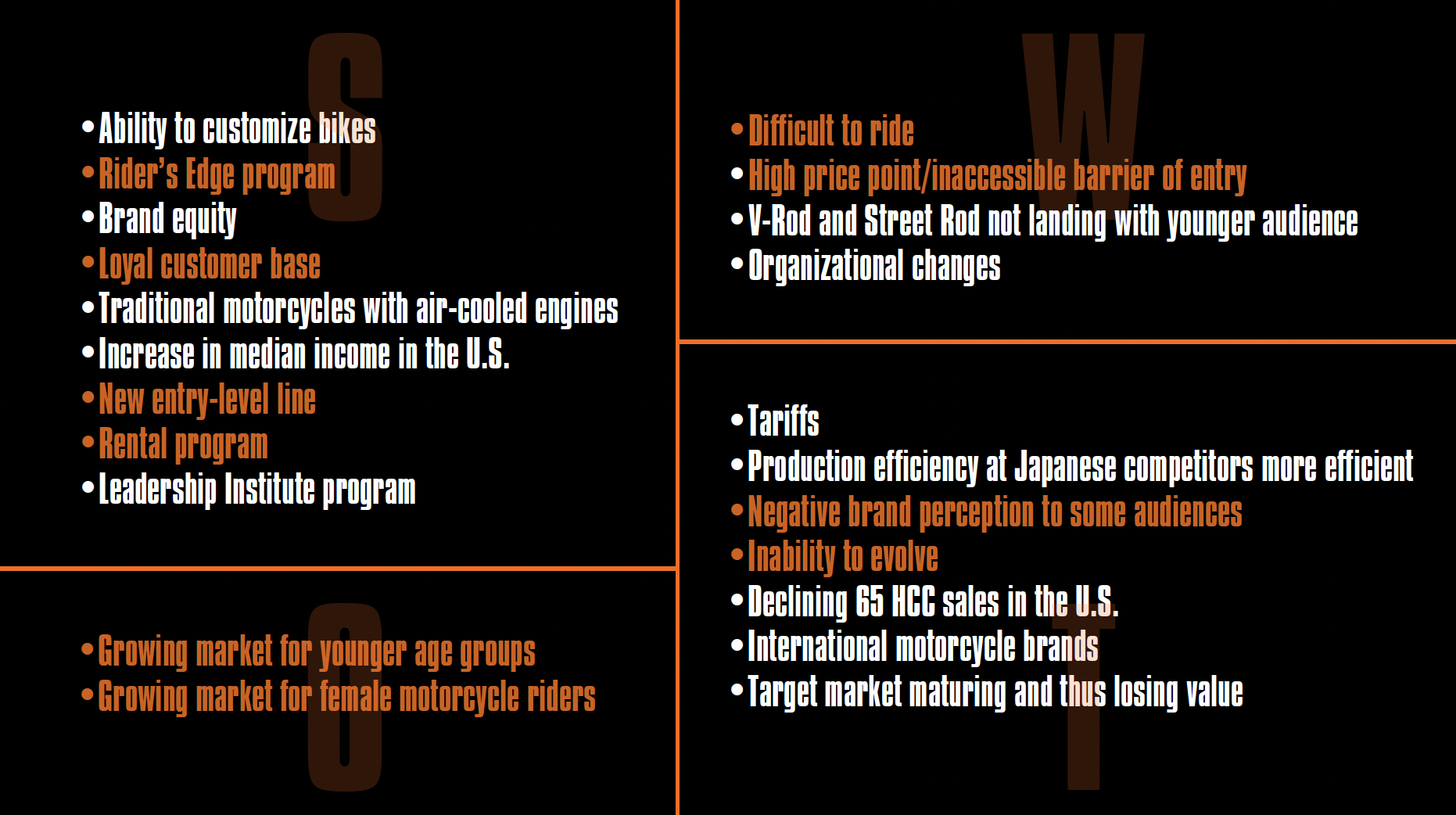
SWOT analysis

Harley-Davidson has many strong brand equities which can be leveraged to help achieve the goal.

People who may seek community in rebellion
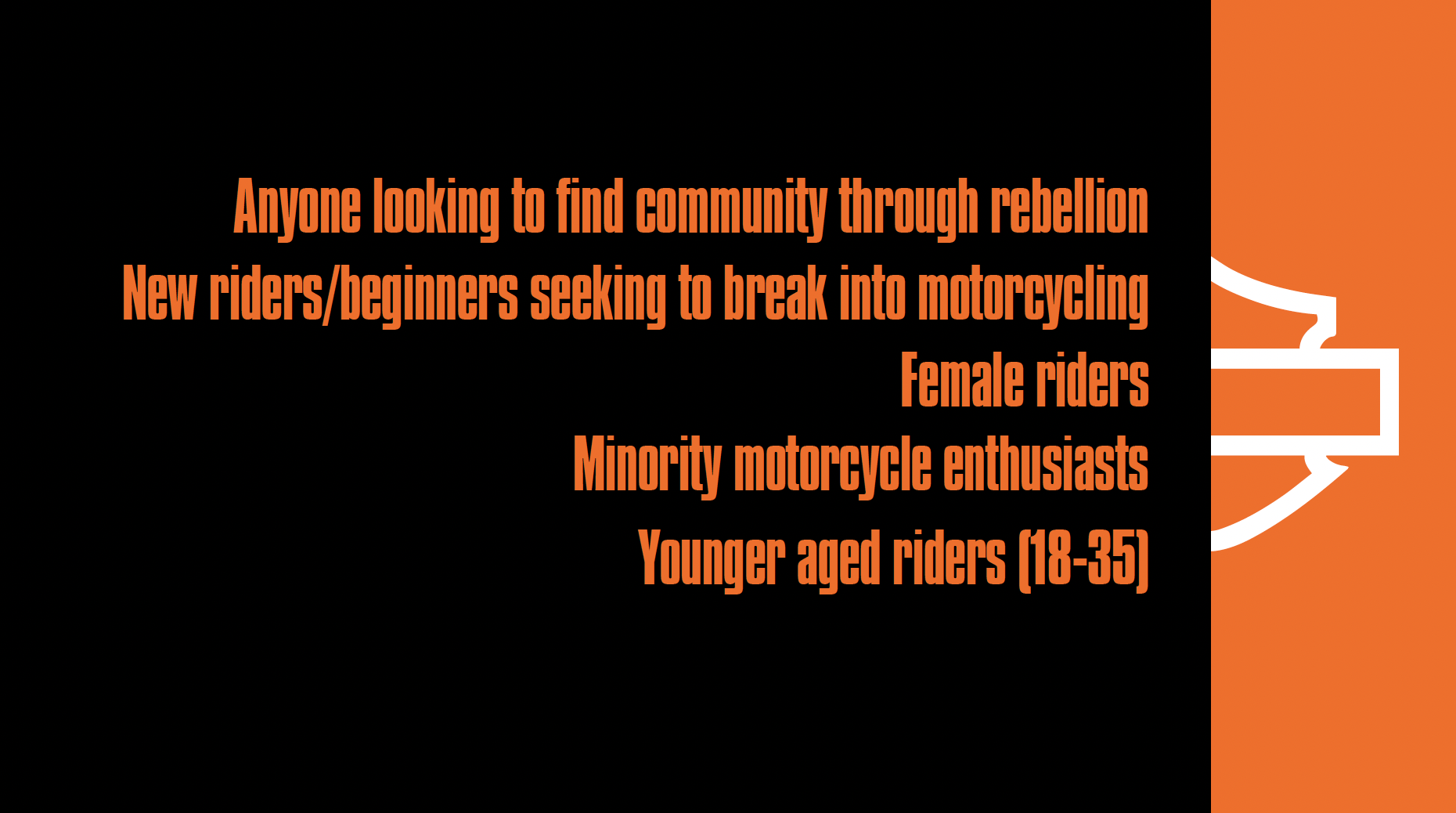
Target segments

Younger audiences are seeking to rebel in a different way than their parents and older generations have rebelled in the past.

Harley-Davidson can empower consumers seeking to rebel through a shared rebellious pasison.

Harley-Davidson was made to rebel.
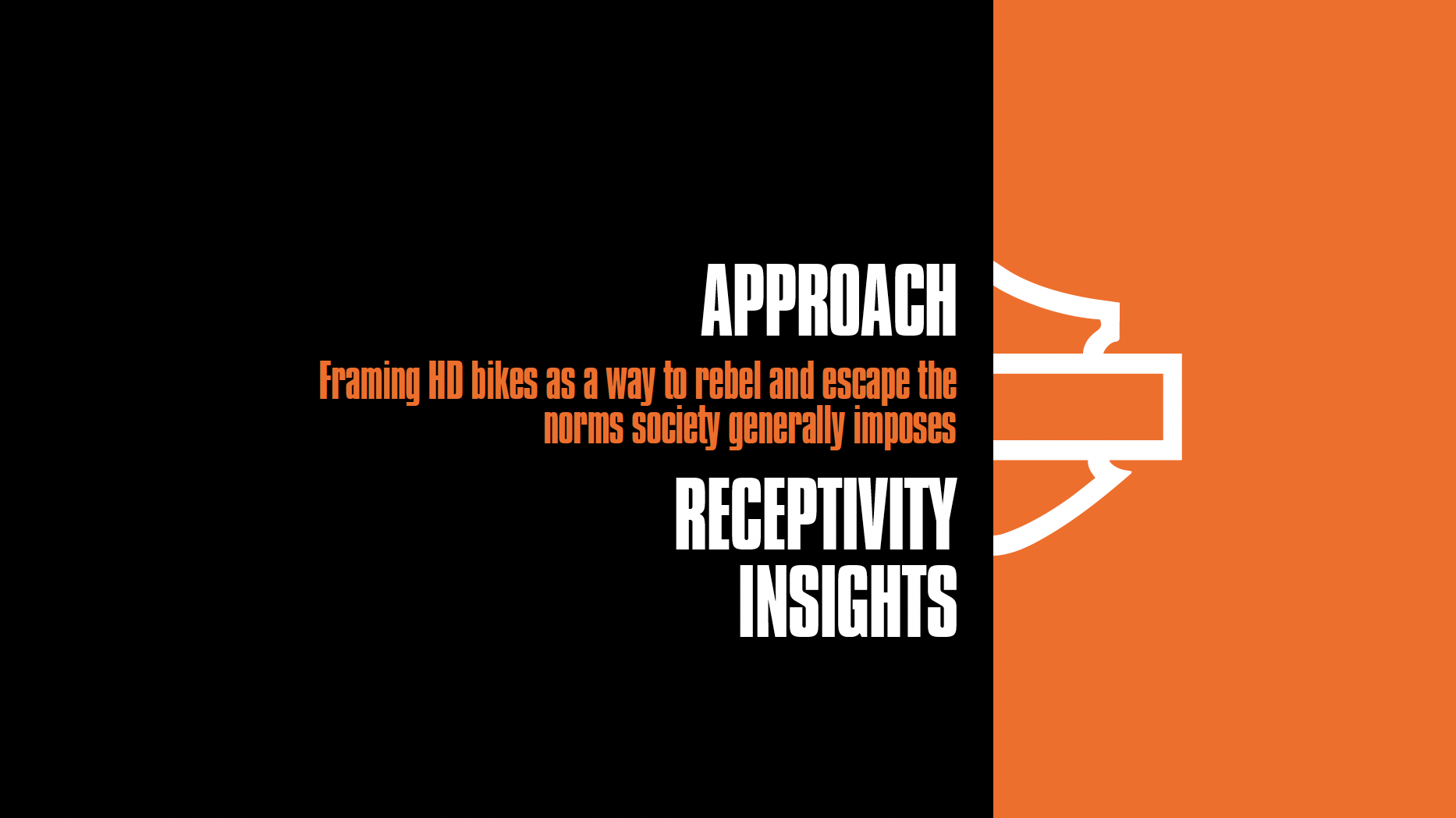
Extending the audience to anyone seeking to rebel
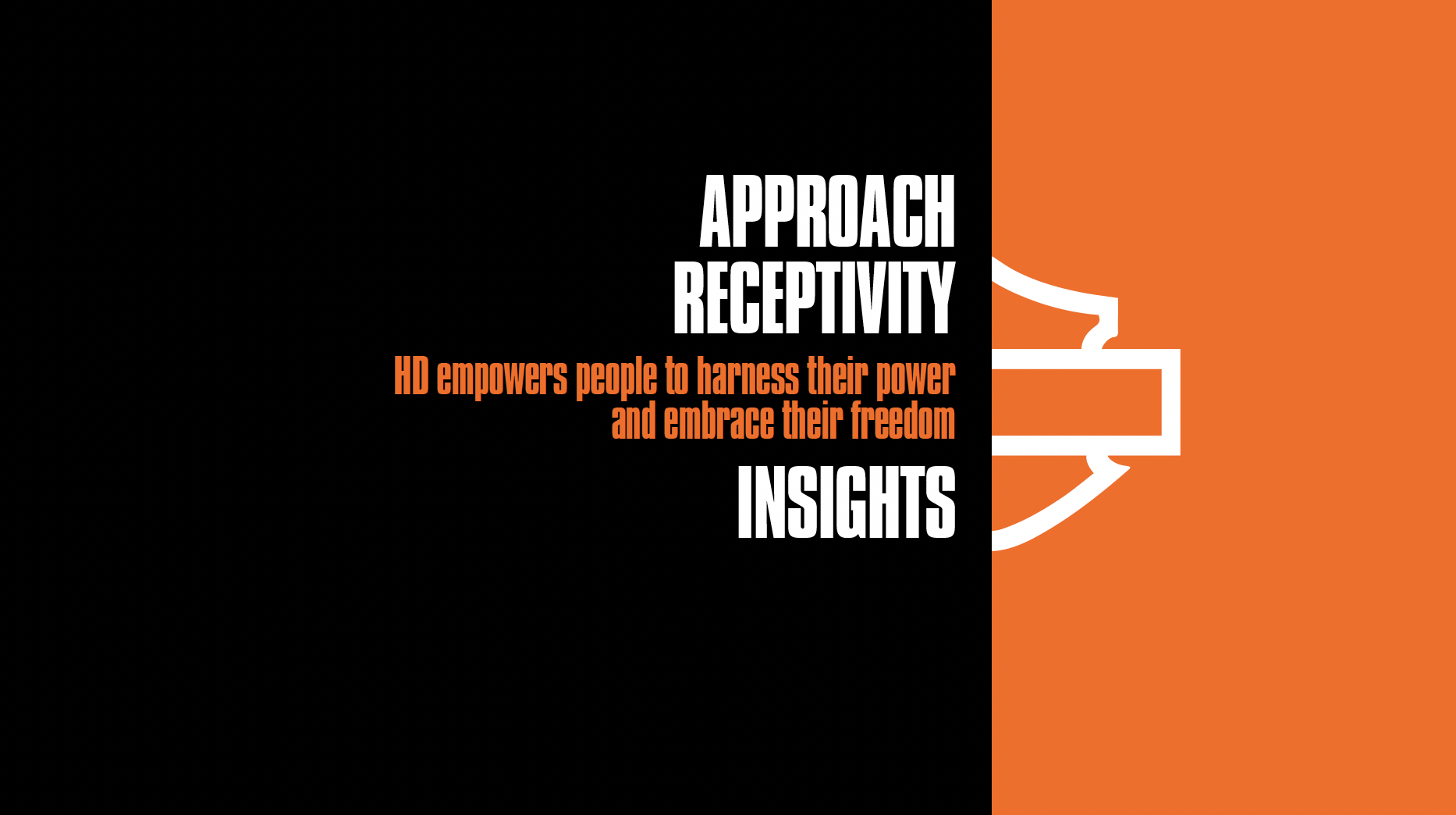
Aiming to be received as a brand that can help people rebel

The brand has an established patriotic image, which has become synonymous with freedom and rebellion.

Goal of achieving a 16% yearly sales growth through the extended Rider's Edge program and more Sportster marketing.
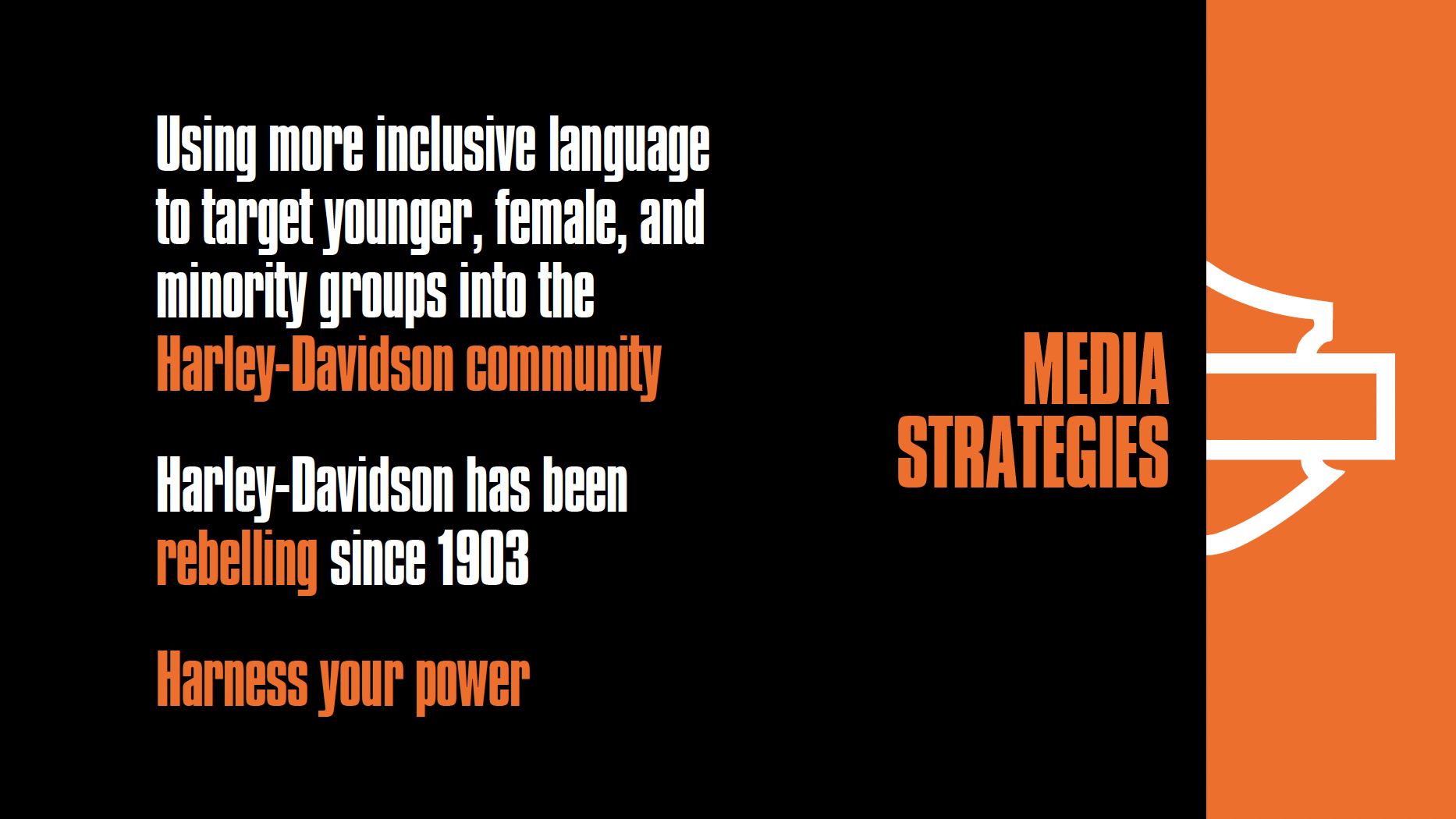
Focusing on enhanced inclusivity in future messaging in order to better cater to all audiences rather than the existing, heavily white, male dominated, audience.

Framing Harley-Davidson as a brand to help anyone who seeks to rebel embrace their power.